When it comes to purchasing a new or used vehicle, two of the most crucial considerations are reliability and maintenance expenses. Operating costs vary significantly between different models, making it essential to find a car known for its dependability.
While a flashy sports car might look appealing, it typically incurs higher costs—from fuel efficiency to replacement parts and repairs—compared to a practical family SUV. Still, there is no shortage of cars and SUVs on the used market that are capable of surpassing 250,000 miles.
Naturally, the history of the automotive industry provides a wealth of insight to guide consumers toward smart buying decisions.
Some manufacturers, such as Toyota, have earned a reputation for “stellar reliability and durability,” though several other brands also offer vehicles built to last. In the following list, we highlight the most resilient vehicles that are “ready to break the 300,000-mile mark and keep moving.”
When it comes to engines, some are built for speed, others for luxury — but a rare few are built to last. If you’re the type who drives a car until the wheels fall off (or at least want an engine that won’t let you down), here’s a list of 10 engines known to break the 400,000-mile barrier with ease — provided you treat them right.
These aren’t mythical legends — they’re proven workhorses backed by real-world mileage and reliability.
1. Toyota 1UZ-FE (4.0L V8)
Originally powering the Lexus LS400 and SC400, this over-engineered V8 was designed with aerospace-level precision. With a cast-iron block and forged internals, this engine laughs in the face of time. 400k miles? Try 500k+ if you stay on top of oil changes.
Toyota’s second production V8 emerged from a top-secret initiative known as the F1 project, which commenced in 1983. Despite its name, it had nothing to do with the world’s top-tier single-seater racing series, where Honda had gained prominence in the latter half of the 1980s.
The term “F1” stood for “Flagship number 1,” and the primary goal of the initiative was to build a high-end luxury sedan capable of going head-to-head with the flagship models offered by BMW, Mercedes-Benz, and Cadillac.
This ambitious project was led by Toyota’s revered chairman, the late Eiji Toyoda. He deliberately placed no limits on the budget or the timeline, allowing the team to pursue excellence without compromise.
It became Toyota’s most expansive engineering undertaking to date, involving a team of 60 designers, 1,400 engineers, 2,300 technicians, and 200 support staff. The entire operation was coordinated under the leadership of chief engineer Ichiro Suzuki.
If the size of the team alone isn’t enough to reflect the scale of the project, then the output surely is. According to Toyota, this effort resulted in the development of 450 unique vehicle prototypes and nearly 900 experimental engines.
The standout powerplant from the extensive testing was a 32-valve, quad-cam, 90-degree V8. At the time, Toyota was becoming widely recognized for its dependable and efficient engines, and this new eight-cylinder unit had to uphold and advance that reputation by achieving near-perfect levels of performance and reliability.
To ensure this, engineers subjected the engine to one of the most exhaustive testing programs imaginable. Before the engine ever reached production, it racked up over 1.67 million miles (2.7 million kilometers) in real-world test conditions, spanning some of the planet’s harshest environments.
Prototype vehicles equipped with the V8 were driven through the frozen landscapes of Northern Europe and across the unforgiving deserts of Saudi Arabia.
In 1989, after six years of development and an estimated $1 billion investment, Toyota revealed the fruits of the F1 project with the debut of the LS 400 and the introduction of the Lexus brand. This strategic move targeted North America’s premium market, directly challenging the newly launched Acura and Infiniti marques.
The LS 400 arrived featuring cutting-edge technologies of its time, with every luxury amenity buyers could expect. Perhaps most strikingly, it was priced lower than a BMW 7 Series or Mercedes S-Class, while offering a quieter ride, greater power, and better fuel efficiency—all thanks to the exceptional 1UZ-FE V8 under the hood.
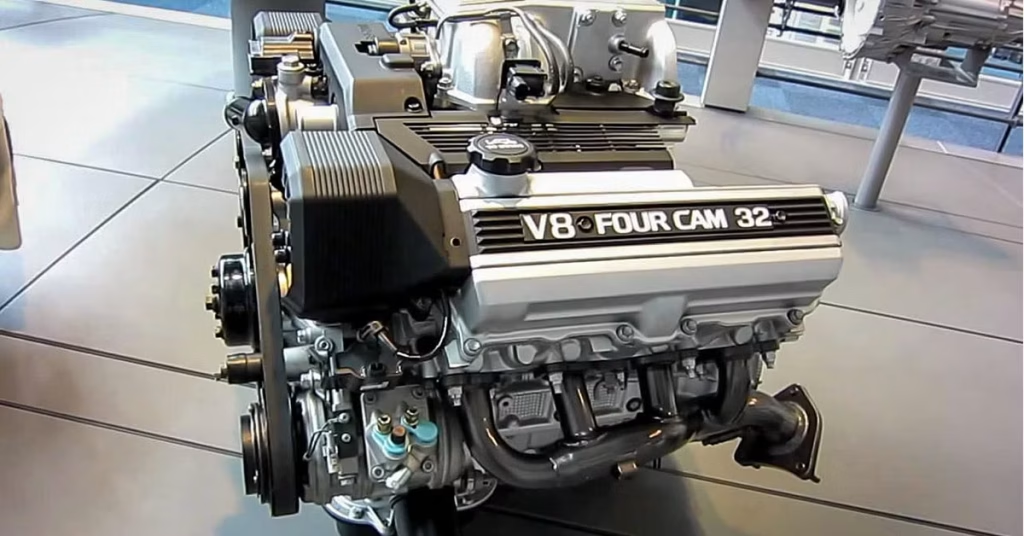
This engine was designed with an oversquare configuration, featuring a bore and stroke of 87.5 mm × 82.5 mm (3.44 in × 3.25 in), resulting in a total displacement of 4.0 liters (242 cubic inches). True to Toyota’s engineering philosophy, the all-aluminum block was heavily fortified to achieve unparalleled durability.
It incorporated a forged steel crankshaft with eight counterweights—two more than what was typical in production V8s—and six cross-bolted main bearing caps, a racing-level reinforcement rarely found in engines built for the street.
Interestingly, the engine’s design had roots in motorsport. The configuration was originally based on a racing-specification unit developed for CART (now IndyCar), a detail confirmed in a 2007 interview with David Currier, then vice president of TRD USA.
Internally, the engine featured sintered forged steel connecting rods matched to hypereutectic pistons. These pistons had finely grooved skirts, which helped reduce friction and promote better lubrication throughout the system.
While the block was inspired by motorsport, the cylinder heads were optimized for fuel economy, making them less thrilling for performance enthusiasts.
Each cylinder head used two conventionally-profiled camshafts. To maintain a compact valvetrain layout, only the intake camshafts were driven by a timing chain. The exhaust cams were actuated by a gear mechanism linked to the intakes.
In its original version, the engine had a compression ratio of 10.0:1, which enabled it to produce 256 horsepower and 260 lb-ft (353 Nm) of torque.
In 1995, the engine was updated with several key improvements, including lighter rods and pistons, the introduction of sequential fuel injection, new camshafts with slightly more aggressive profiles, and a revised exhaust manifold. The compression ratio increased to 10.4:1, which resulted in a modest power boost to 261 horsepower and 269 lb-ft (365 Nm) of torque.
A second revision followed in 1997, during which Toyota added its VVT-i (Variable Valve Timing with intelligence) technology. This final version of the engine was capable of producing up to 300 horsepower and 310 lb-ft (420 Nm) of torque.
Also Read: Top 5 Cars That Don’t Require Premium Gas and 5 That Can’t Run Without It
2. Honda K-Series (2.0L–2.4L I4)
Used in everything from the Civic Si to the Accord and CR-V, the K-series is a simple, smart DOHC engine that just doesn’t quit. Known for minimal oil consumption and rock-solid internals, 400k miles is well within reach.
Some engines are simply better suited for specific applications. If you’re shopping for a fuel-efficient daily driver, you’d do well to avoid a big-block V8. Similarly, if your goal is to build a high-performance sports car, a four-cylinder diesel isn’t likely to cut it.
When searching for a thrilling engine to swap into a performance build, one particular name consistently stands out: Honda’s K24 engine.
This K-series inline-four from Honda has earned a loyal following in the tuning scene for a wide range of reasons. To better understand the hype, we took a closer look at what makes this engine so special.
Honda first launched its now-iconic K-series engines in 2001 during a period of significant refresh across its vehicle lineup. The debut model in the series was the K20A, which replaced the outgoing B-series engine family.
Although the K- and B-series engines share some similarities, the K-series featured larger displacement options, ranging from 2.0 liters to the 2.4-liter K24 variant.
Shortly after its introduction, the K24 became a staple in Honda’s larger vehicles. While the engine was available in less powerful versions for models like the CR-V and Element, it also appeared in sportier models such as the Acura TSX, where it produced more than 200 horsepower.
Key elements shared by all K-series engines include Honda’s signature V-TEC system, which enables seamless transitions between different camshaft profiles depending on engine speed. This allows for improved efficiency at low RPMs and enhanced performance at higher revs.
The entire engine is constructed from aluminum, keeping the overall weight low and contributing to better handling. Additionally, the K-series engines utilize dual overhead camshafts (DOHC), further enhancing performance and efficiency.
The K-series engine first powered the Civic and Integra Type R models in 2001, but it quickly made its way into less performance-oriented vehicles, including base versions of the Civic and Accord.
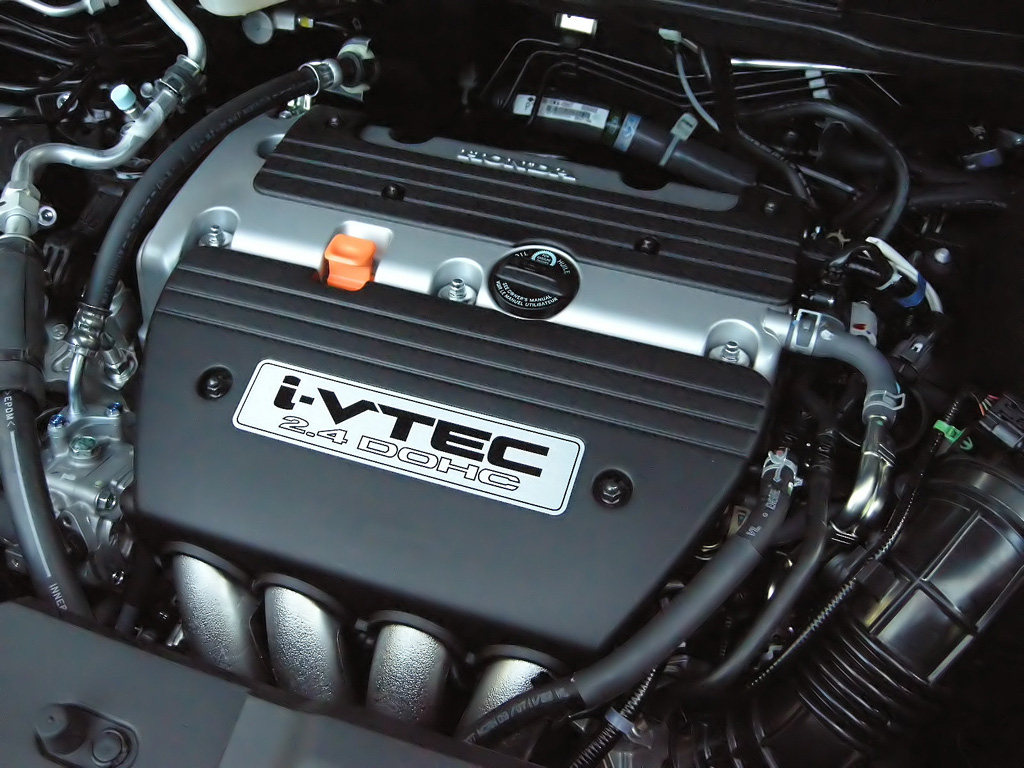
For much of its life, the K-series remained naturally aspirated. However, to keep pace with rising competition, Honda introduced a turbocharged version of the K20 starting with the 2015 Civic Type R, and every Type R since has followed suit with forced induction.
Over the years, the K24 engine has been installed in a broad array of vehicles. The K24A1 powered the 2002–2006 Honda CR-V with 160 horsepower and 162 lb-ft of torque. The K24A2 found in the 2004–2008 Acura TSX delivered 205 horsepower and 166 lb-ft.
The K24A4 was used in the 2003–2005 Honda Accord, 2003–2008 Honda Odyssey, and 2003–2006 Honda Element, producing 160 horsepower and 161 lb-ft. The K24W, which powered the 2013–2017 Accord and 2015–2019 CR-V, made 185 horsepower and 181 lb-ft.
The K24V7 engine used in the 2016–2020 Acura ILX put out 201 horsepower and 180 lb-ft, while the K24W7 in the 2015–2020 Acura TLX generated 206 horsepower and 182 lb-ft. Finally, the K24Y2, used in the 2012–2015 Honda Crosstour, delivered 192 horsepower and 162 lb-ft of torque.
More premium models, including the Acura TLX and TSX, were given more powerful K24 variants, which helped justify their higher price tags compared to standard Honda offerings.
While no current Honda or Acura models in the U.S. feature the K24 engine, it remained in use as recently as the 2020 Acura ILX. That marks nearly two decades of production for the K24 in North America.
When comparing the K24 to its sibling, the K20, the most obvious difference is displacement. The K24 boasts a 2.4-liter capacity, whereas the K20 checks in at 2.0 liters.
The larger engine naturally produces more torque, making it better suited for heavier applications like crossovers and SUVs. While the K24’s stock horsepower figures aren’t groundbreaking, its potential for additional power through tuning makes it an attractive option for builders.
Another major distinction lies in the factory approach to forced induction. Over the last ten years, Honda has equipped the K20 with a turbocharger for its Type R models, allowing it to remain competitive in an increasingly powerful segment. In contrast, the K24 has always remained naturally aspirated from the factory.
The engines also differ in where they are most commonly found. The K20 has been used in both economy cars and high-performance models like the Civic Type R. Meanwhile, the K24 tends to be found in upscale Acura sedans or practical, family-oriented crossovers and SUVs.
The K24 has earned a solid reputation among tuners for good reason. Honda’s engines, in general, are well-regarded by enthusiasts who enjoy modifying their vehicles, and the K-series engines are particularly suited for that purpose. As a member of the K-series family, the K24 brings that same adaptability and potential.
Reliability is one of the most critical traits tuners look for, and the K24 delivers in spades. Building a powerful engine is meaningless if it can’t handle the load, and Honda’s K-series is considered nearly bulletproof. Starting with such a dependable foundation is a great way to ensure lasting performance after modification.
What really sweetens the deal for performance builders is that the K24’s internals can handle significant power increases without requiring immediate upgrades.
While many engines need costly forged components to safely run a turbo or supercharger, the K24 can handle boost levels that push power well past 400 horsepower even with factory internals.
Another reason the K24 stands out is its ability to rev. High-revving engines provide more excitement and allow for longer pulls in each gear. The K24 has a factory redline of 7,200 RPM, making it one of the most engaging inline-fours available at its price point.
For all these reasons, Honda’s K24 has earned its place as one of the most sought-after engines for high-performance builds. It’s versatile, durable, and capable of serious performance—qualities that continue to make it a favorite in the tuning world.
3. Ford 300 I6 (4.9L Inline-6)
Built like a tank, this engine was a favorite in Ford trucks and vans for decades. It’s underpowered, yes — but that’s why it lives so long. You’ll often see these engines working on farms and construction sites well past the 400k-mile mark.
Automakers have designed and manufactured a vast number of engines over the years, but only a select few have earned the kind of recognition that borders on legendary.
The Ford 300 cubic-inch inline-six is unquestionably among that elite group. This engine has long been held in high regard, especially in certain circles, and it’s rare to come across anyone willing to speak ill of this famously dependable torque powerhouse.
That is, until Ford Truck Enthusiasts member mary-kate recently ignited a heated debate by questioning the revered 300’s legacy in a Ford Truck Enthusiasts forum thread.
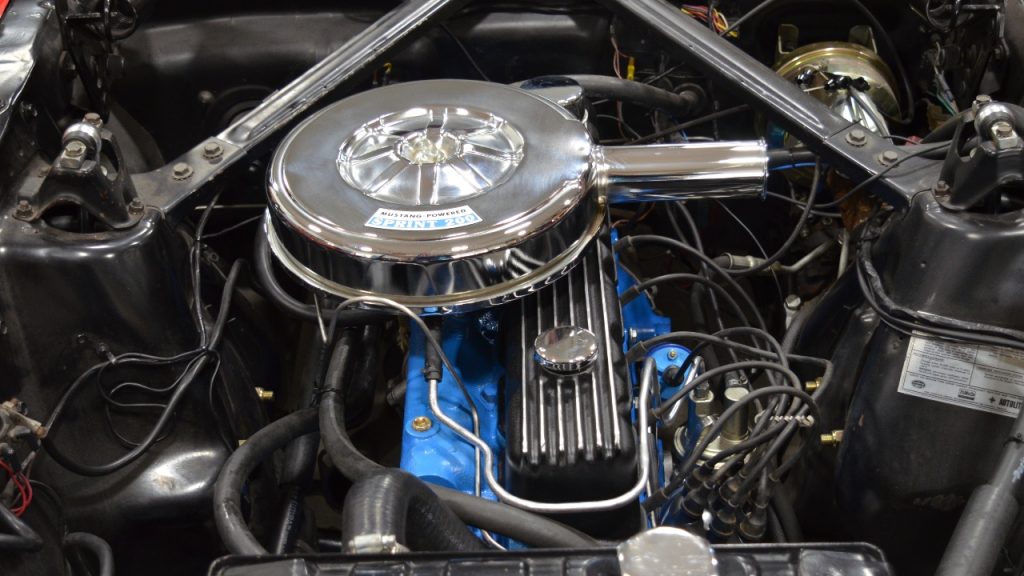
“I assert the 300’s durability is a myth. Even with meticulous upkeep they lose compression, crack castings, and blow head gaskets.
I don’t base this only on the trucks I have owned, I know several people that have had 300s from the ’70s, ’80s, and ’90s crap out on them from mechanical failure. Two of them from thrown rods, of all things. No one I know has had a running 300 six for almost ten years now.
These engines aren’t that durable or even that good. Every manufacturer makes engines that will go a million miles with just oil changes, but the chance of owning one is worse than the lottery.”
Despite such criticism, praise for the 300 inline-six as an indestructible, long-lasting, and top-tier engine in Ford’s history continues to surface regularly.
According to mary-kate, though, the loudest champions of the 300 are often people who have never actually owned one themselves—people who, she suggests, are perpetuating an unfounded myth.
She further argues that it doesn’t matter whether the engine can keep running after a major failure, because many engines from that era, especially from Ford, can do the same. In her view, only car dealers could find value in an engine that keeps going while being half-broken.
Also Read: Top 10 Vehicles With Storage Bins That Are Great for First Aid Kits
4. Mercedes-Benz OM617 (3.0L Diesel I5)
This diesel inline-five from the ‘70s and ‘80s was made to run forever. Known to reach a million miles in taxi cabs, 400k is just middle-aged for an OM617. Keep the fuel clean, and it will never stop.
If there were a hall of fame dedicated to the most significant engines in automotive history, the Chevy Small Block would likely be the first to earn a place.
Chrysler would undoubtedly have entries with the HEMI engine and the Slant-6. Ford’s contributions would include the 5.0 engine and the 300 inline-6, and no one would argue against it. Toyota’s legendary 2JZ motor—used in the Supra and numerous custom builds—would absolutely merit inclusion as well.
Advertisement
Each of these engines possesses a distinct quality that elevates it far beyond the typical powerplant most people encounter, earning it iconic status among car enthusiasts.
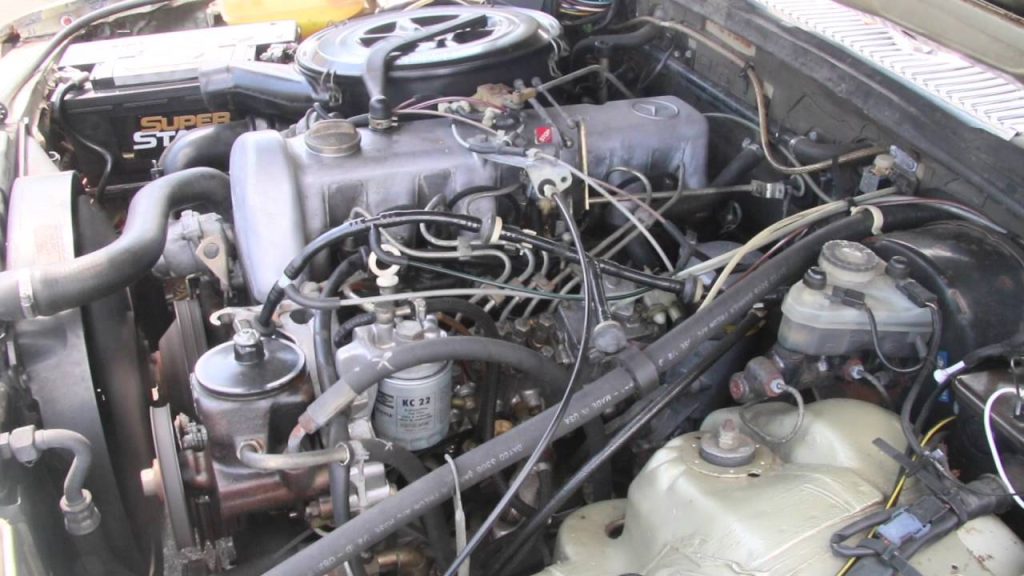
The Chevy Small Block stands out for being endlessly customizable. The Chrysler HEMI is known for producing massive power. Ford’s 5.0 engine served as the heartbeat of the Mustang for years. Meanwhile, Toyota’s 2JZ is considered a dream platform for tuners.
There are many other engines that could also belong in this hypothetical hall of fame. However, one particular engine arguably deserves a spot above all the rest: the OM617 diesel produced by Mercedes-Benz.
This unassuming diesel engine earned a number of remarkable accolades when it debuted on the European market in 1974. It became the first five-cylinder engine ever installed in a passenger vehicle.
Despite delivering only 80 horsepower at launch, it was also, at that time, the most powerful engine (via Mercedes-Benz). In 1977, a turbocharged version made its way to the U.S., according to Hemmings, and it quickly gained popularity.
5. Toyota 2UZ-FE (4.7L V8)
Another bulletproof Toyota engine, this one was used in the Land Cruiser, Sequoia, and Tundra. Built for both luxury and off-road abuse, it’s not uncommon to find these V8s still running strong with minimal repairs at 400k+.
While the spotlight often shines on its older sibling, the 1UZ-FE, Toyota’s 4.7-liter 2UZ-FE has quietly emerged as an overlooked gem.
As the second installment in Toyota’s acclaimed ‘UZ’ engine family, the 2UZ took a different path in both design and intent, which made it less appealing to many within the tuning community. The 1UZ was engineered for performance-oriented luxury vehicles like the Lexus GS400, Toyota Ariston, and Toyota Soarer.
But Toyota had a different objective for the 2UZ—this engine was built not for sleek sedans but for the tougher demands of SUVs and trucks, where reliability and torque mattered more than high-revving agility.
Understandably, this design approach doesn’t scream “ideal powerplant” for someone building a lightweight drift machine.
Where the 1UZ’s later VVTi variant delivered up to 300 horsepower, the comparable 2UZ managed only 271 horsepower. Still, horsepower isn’t where the 2UZ shines.
The real strength of this engine lies in its torque output—315 lb-ft available at just 3,400 rpm, versus the 310 lb-ft at 4,000 rpm offered by the 1UZ. So while both engines bring strengths to the table, the 2UZ leans heavily into the low-end grunt that suits utility-focused applications.
Even though it’s easy to fixate on the downsides, the 2UZ’s larger displacement and higher torque output are definite assets. And that’s only the beginning—there’s much more to appreciate in this powerplant.
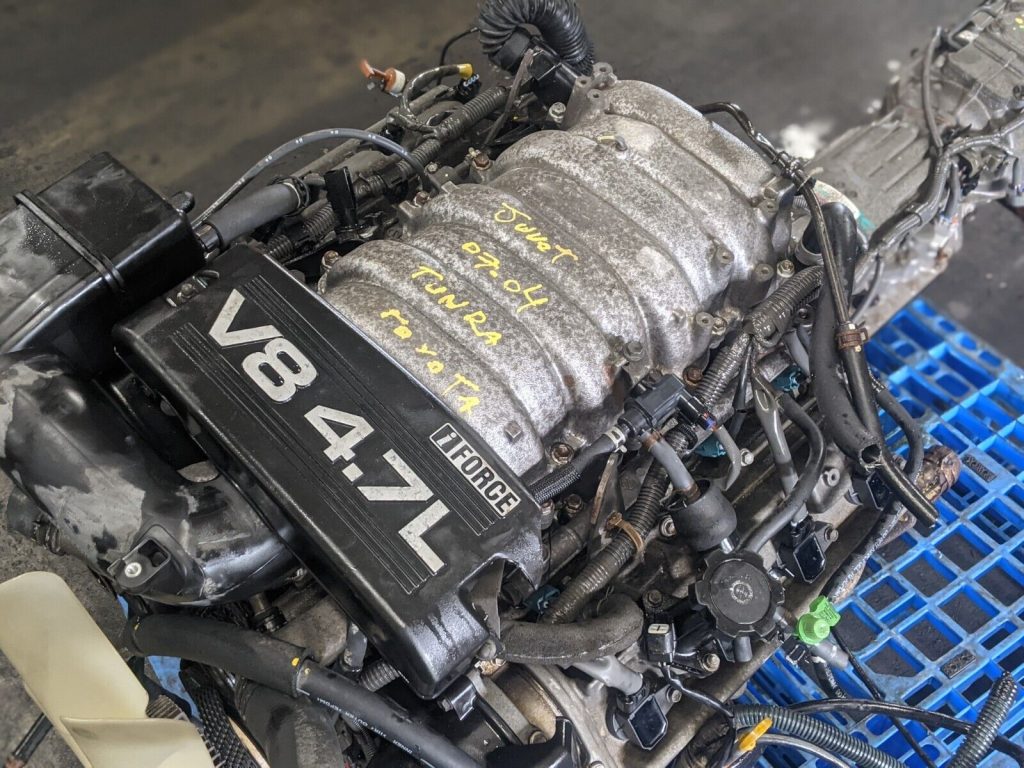
The 2UZ-FE is the second in the UZ engine lineup and features a displacement of 4.7 liters (4,663cc). It is a water-cooled, naturally aspirated V8 with a compression ratio of 9.6:1 before 2007 and 10.0:1 from 2007 onward.
Production began in 1998 under the Toyota Motor Corporation and continued in the U.S. market until 2011, with the Hong Kong market keeping it alive until 2012.
As for the engine code: the “2” designates the second generation in the UZ family; “UZ” identifies the engine series; “F” indicates a narrow-angle DOHC setup optimized for economy; and “E” signifies Sequential MultiPort Fuel Injection (SFI).
The 2UZ-FE features eight cylinders in a V configuration with a 90-degree bank angle, and a firing order of 1-8-4-3-6-5-7-2.
What caught many by surprise was Toyota’s choice to use a cast-iron block for the 2UZ, deviating from the aluminum blocks found in both the 1UZ and the later 3UZ-FE. This move was aimed at increasing reliability and reducing manufacturing costs.
Considering the engine was tailored for trucks and SUVs, Toyota prioritized durability over weight, and at 255 kg (562 lbs), the engine is anything but lightweight.
Despite the change in block material, the 2UZ remains closely related to the 1UZ in terms of architecture and measurements, with the major differences being its larger bore and stroke.
The engine pairs its cast-iron block with aluminum-alloy cylinder heads, which include a cross-flow intake and exhaust layout along with pentroof-style combustion chambers. These heads house 32 valves—four per cylinder—and use steel solid valve lifters that need periodic adjustment.
The camshaft operation in the 2UZ mirrors that of the 1UZ. The intake camshafts are belt-driven, while the exhaust camshafts are operated via a gear connected to the intake camshaft. The overall valvetrain design remains consistent across both engines, reinforcing the shared DNA that underpins the UZ engine family.
Also Read: 13 Engines That Made Japanese Cars Unstoppable and Changed Performance Culture Forever
6. GM 5.3L Vortec V8 (LS-Based)
Used in countless Chevy Silverados, Suburbans, and Tahoes, this engine proves that GM got at least one thing very right. The 5.3L is simple, reliable, and forgiving. Change the oil, don’t overheat it, and it’ll take you the distance.
The Vortec 5.3L V8 LMG engine was developed by General Motors specifically for use in full-size SUVs. With a displacement of 5.3 liters in a V8 layout, the LMG belonged to GM’s Vortec (Generation IV Small Block) engine family. This generation of engines has since been succeeded by the EcoTec3 (Generation V Small Block) lineup.
The LMG shares its core with the 5.3-liter V8 Vortec LMF engine but distinguishes itself by incorporating Active Fuel Management (AFM), also known as Cylinder Deactivation. This feature allowed the engine to deactivate half of its cylinders under certain conditions to enhance fuel efficiency.
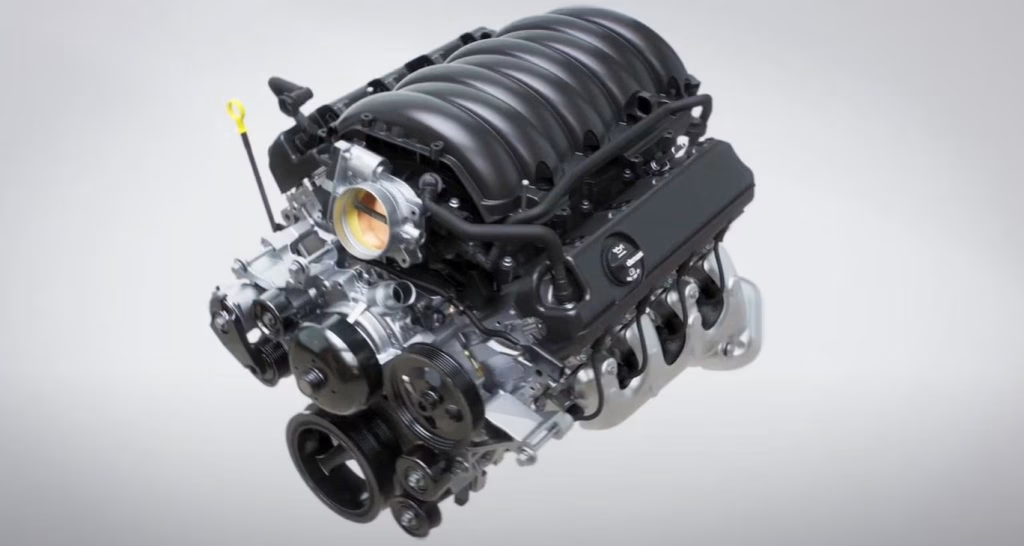
GM manufactured the LMG for use in its 2006–2014 GMT900-platform SUVs, such as the Chevrolet Tahoe and Suburban, along with the GMC Yukon and Yukon XL. With the release of the completely redesigned 2015 models of the Tahoe/Suburban and Yukon/Yukon XL, the LMG was phased out in favor of the new 5.3-liter V8 EcoTec3 L83 engine.
The LMG is a technically sophisticated member of the small-block V8 family, offering an impressive blend of horsepower, torque, and fuel efficiency—ideal for full-size trucks and SUVs. Variable valve timing contributes to optimizing both performance and fuel economy while also helping to lower emissions.
In addition, GM’s Active Fuel Management system enhances fuel savings under light-load driving conditions by deactivating certain cylinders. The engine also supports E85 ethanol fuel. Across all configurations, the LMG is paired with GM’s Hydra-Matic 6L80 six-speed automatic transmission.
7. Cummins 5.9L 12-Valve Diesel (6BT)
Found in Dodge Ram trucks, this engine is a beast. Mechanically simple, torque-rich, and known to hit a million miles in fleet use. If you want a diesel that doesn’t die, this is your best bet.
A straightforward design, exceptional reliability, remarkable performance potential, and legendary durability that can stretch into the million-mile range all contribute to the enduring appeal of the 12-valve 5.9L 6BT Cummins.
From the start, the 12-valve 5.9L 6BT Cummins was equipped with 230 horsepower, 440 lb-ft of torque, and a P7100 inline injection pump. Although it was originally developed for agricultural use, its popularity soared once it found a home in Ram trucks beginning in 1989.
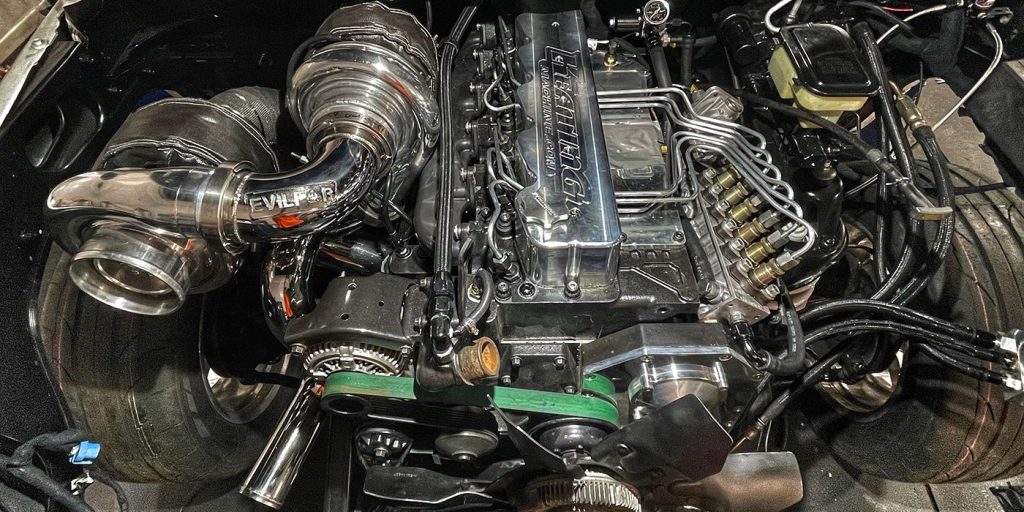
For thousands of diesel enthusiasts, this 1,100-pound chunk of cast iron is viewed as the foundation of the modern diesel performance movement. The ¾-ton and 1-ton Dodge Rams equipped with it can be relatively easily upgraded to produce 500 rear-wheel horsepower, achieve over 20 mpg on the highway, and exceed half a million miles of service.
Beyond being the preferred engine in the competitive truck pulling arena, the 12-valve Cummins has also become a go-to swap candidate, powering a wide array of Jeep builds, rat rods, muscle cars, and dragsters.
8. Volvo B230 (2.3L I4)
Volvo’s redblock engines from the 240 and 740 series are known to run forever. The B230 in particular is a tank. Not fast, not flashy, but tough as nails. Many enthusiasts joke the engine will outlive the car. They’re not wrong.
The B230FT — along with all versions of the Volvo Redblock engine — came in as the successor to the aging B20 powerplants that originated in the late 1960s.
It featured a crossflow aluminum cylinder head paired with a cast iron block and used a belt-driven single overhead camshaft equipped with sodium-filled valves. To achieve a lower compression ratio, Volvo implemented shorter, forged dish pistons.
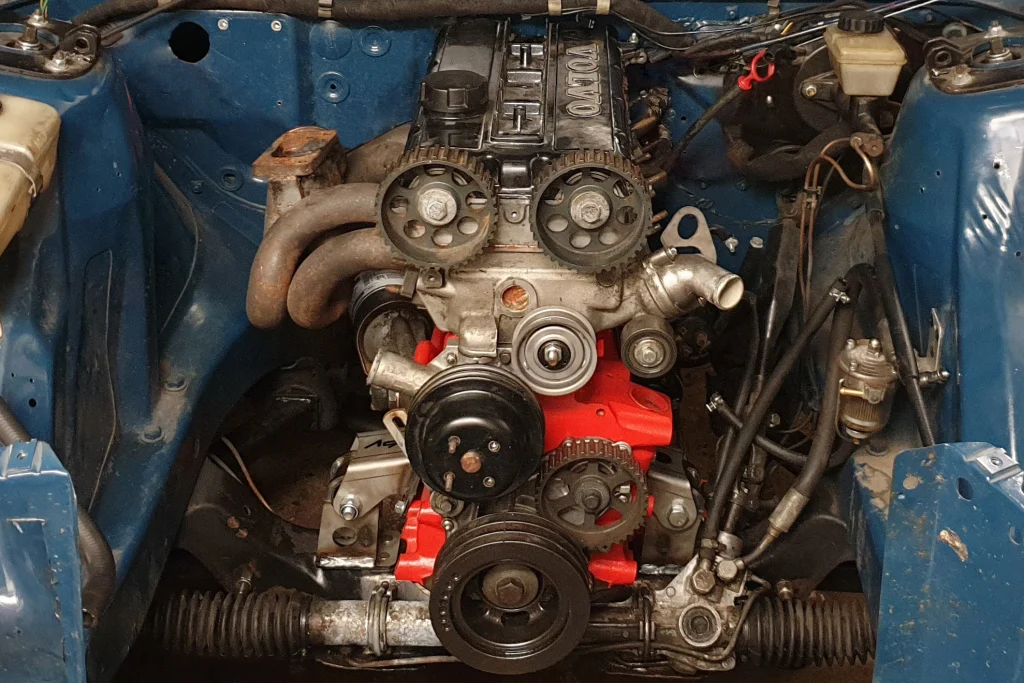
Simultaneously, engineers added longer connecting rods, smaller main bearings, and extra counterweights to the forged crankshaft to ensure smoother engine rotation.
Delivering approximately 165 horsepower across various Volvo 200, 700, and 900 Series models, the B230FT wasn’t engineered for high-rev theatrics or massive low-end torque. Instead, Volvo’s design focused on creating a compact turbocharged engine that prioritized ease of maintenance and serviceability.
This approach allowed the B230FT Redblock to handle increased power levels with relatively simple tuning modifications while maintaining rock-solid reliability. These qualities helped secure its place as a standout choice within the Volvo tuning scene.
9. Honda J35 (3.5L V6)
Found in everything from the Honda Odyssey to the Accord and Pilot, the J35 is a V6 that balances smooth power with remarkable longevity. Timing belt changes and clean oil are your keys to 400k success.
The J35 engine is a 3.5-liter V6 that produces up to 290 horsepower and more than 250 lb-ft of torque. These specifications can vary slightly depending on the specific variant of the J35, which appears across a wide range of Honda vehicles, including the Honda Accord, Pilot, Ridgeline, Odyssey, and Elysion, as well as Acura models such as the RLX and TLX.
In certain vehicles, the engine is naturally aspirated, while some Acura applications feature a supercharged version. The compression ratio of the J35 spans from 10:1 to 11.5:1, contributing to its balanced performance and fuel efficiency.
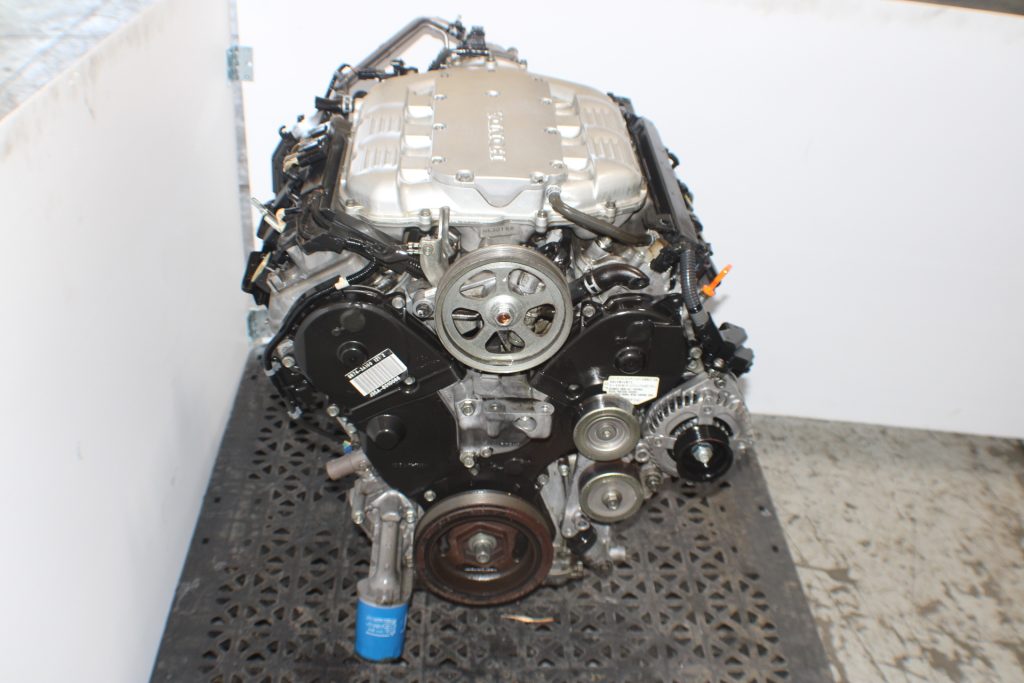
The J35’s structural design includes its block, cylinder head, and pistons, all of which are key contributors to the engine’s overall capabilities.
It is built with a high-strength engine block, a single overhead camshaft valvetrain configuration with four valves per cylinder, and an aluminum alloy VTEC cylinder head. The pistons are made of aluminum and are cooled by dedicated oil jets, enhancing their longevity and overall durability.
Like all Honda engines, the J35 incorporates modern engineering advancements. It utilizes the VTEC (Variable Valve Timing and Lift Electronic Control) system to improve both low-RPM torque and high-end power by optimizing the air-fuel mixture, thus increasing overall efficiency.
Additionally, the engine includes a fully active engine mount system along with Active Control Engine Mount (ACM) technology, which works to suppress Noise, Vibration, and Harshness (NVH) coming from the powertrain. The engine’s design also supports fast idle through optimized camshaft alignment, helping reduce fuel consumption while the vehicle is at idle.
10. Toyota 1HD-T/1HD-FT Diesel (4.2L I6)
Used in Land Cruisers and Toyota trucks globally, these turbo diesels are the stuff of legend. Built for harsh conditions and minimal maintenance, they are a favorite of overlanders and expedition vehicles. Reaching 400k miles is just routine maintenance.
The 1HD-T engine represents one of Toyota’s most resilient achievements in its engine lineup—a turbo-diesel workhorse revered by off-road enthusiasts across the globe.
Built for the harshest conditions, this 4.2-liter turbocharged diesel engine combines exceptional low-end torque with long-lasting durability, making it a top choice for demanding workloads and extreme terrains.
Whether you’re hauling heavy loads, maneuvering through urban environments, or tackling remote trails, the 1HD-T consistently delivers dependable performance without compromising on fuel economy. It’s an engine that not only withstands the test of time but continues to uphold Toyota’s reputation for power and reliability.
The Toyota 1HD-T is a torque-focused machine designed to excel under pressure, especially in tasks that demand serious pulling power like off-roading and towing.
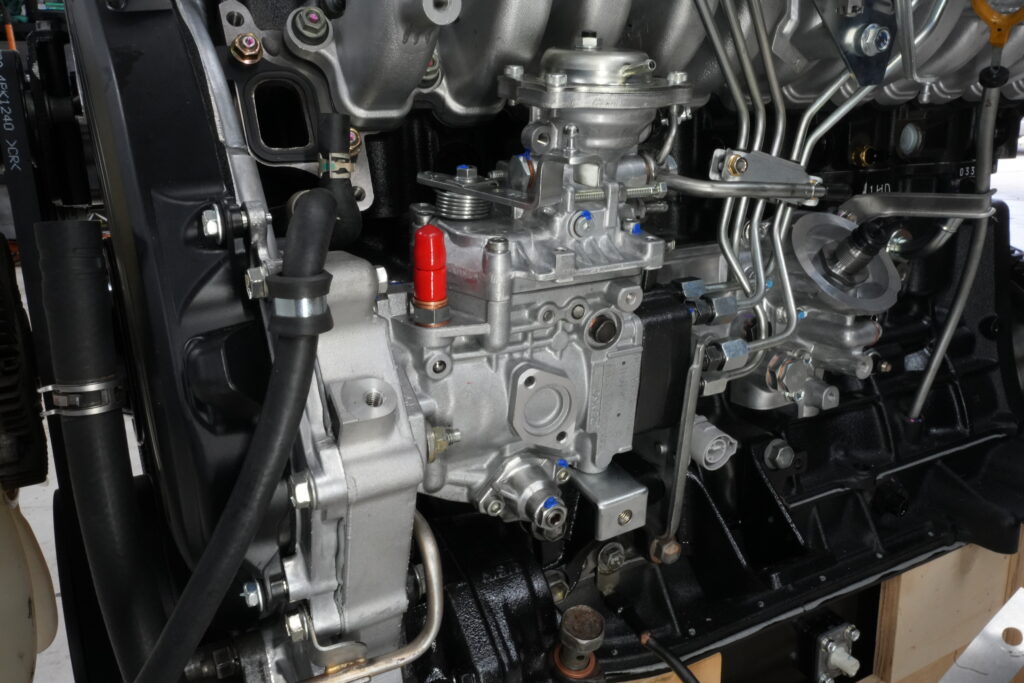
With 164 horsepower and 361 Nm of torque on tap, it’s easy to understand why this engine holds legendary status in the diesel community.
The 1HD-T goes beyond just raw output; it’s engineered to maintain stable performance across various RPM ranges, delivering the torque you need whether you’re tackling downtown traffic or remote backcountry trails.
Despite its age, the 1HD-T still delivers strong fuel economy figures relative to its size and class.
It consumes about 14.1 liters per 100 kilometers in urban settings, 9.3 liters on the open highway, and averages around 11.1 liters per 100 kilometers under mixed conditions. The 1HD-T manages to balance strength and efficiency in a way that appeals to those who rely on their engine’s performance but also keep an eye on running costs.
Toyota’s 1HD-T is a 4.2-liter inline-six turbo-diesel engine, engineered with long-term endurance in mind. It features a rugged cast-iron engine block with a 94 mm bore and a 100 mm stroke, resulting in a total displacement of 4164 cc.
The engine incorporates a single overhead camshaft (SOHC) with 12 valves and a Toyota CT26 turbocharger. Its construction focuses on toughness and output, making it more than capable of handling whatever challenges come its way.
These engines weren’t built to impress a dyno chart — they were built to last. The secret to hitting 400,000 miles? Regular maintenance, proper fluids, and driving like you plan to keep the car forever.
If you’re looking for a daily driver or workhorse that won’t quit, start with one of these engines. They might just outlive you.

